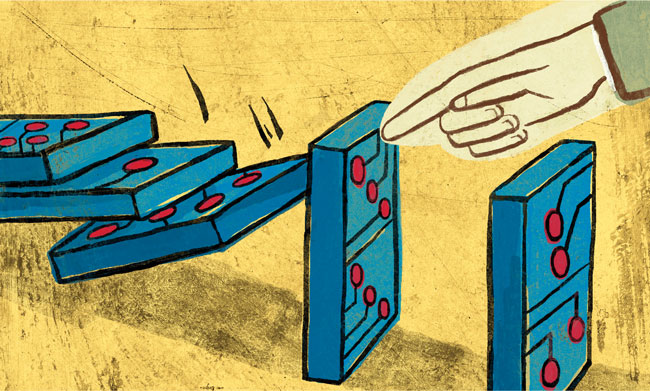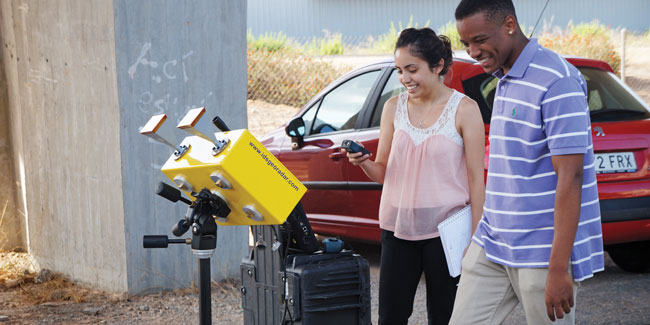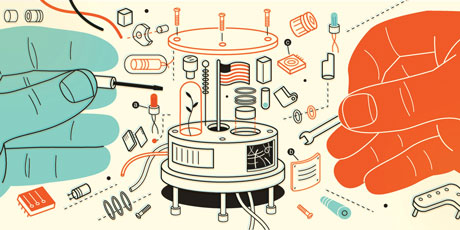mi casa
Mastering Disaster
Civil engineering students partner with Spanish mentors to improve disaster response and recovery

Last summer, civil engineering Professor Nur Yazdani and a group of students traveled to Spain to study how engineers there prepare civil infrastructure for natural, manmade, and accidental disasters.
The trip was part of a three-year, $250,000 National Science Foundation grant that gives students the chance to collaborate with the AIDICO Technological Institute of Construction in Valencia, Spain, on projects aligned with UTA’s Disaster Mitigation Group. The 2014 cohort of student researchers included three civil engineering majors from UT Arlington: Ariel Deval, who researched non-destructive testing and wireless monitoring for seismic risk reduction; Kelsey Fort, who studied worker fall protection from temporary construction; and Kavitha Ramaswamy, who examined the fire resistance of building elements.
“Overall the experience was unlike any I have ever had,” Deval says. “I learned a lot about civil engineering in Spain from the mentors at AIDICO and about the country’s rich culture and language from program coordinators, neighbors, store clerks, and even artists we met.”

Ariel Deval (left) and a fellow student test systems in Spain.
Dr. Yazdani, who leads the Disaster Mitigation Group, says the overseas research program is valuable because it lets undergraduates study and develop quick solutions to the infrastructure and technology problems that arise from natural, man-made, and accidental disasters in a global setting.
“The quicker you get infrastructure and technology operational again, the better off a business or community is,” he explains. “Once our students do research in these areas, they’ll have a professional background. That makes them more marketable once they graduate. They also learn to develop international networking and to appreciate the global nature of engineering and hazard mitigation.
“The hope is to have this collaboration long term,” Yazdani continues. “That way, once they come back, the students will be able to keep collaborating with their Spanish mentors so they get a global perspective of engineering and see how mitigation is done in other parts of the world.”
Illustration by Jud Guitteau


















